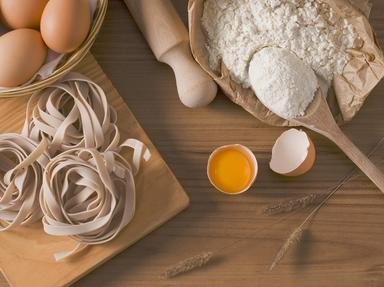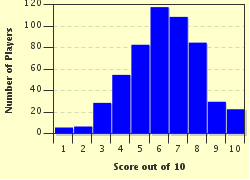Quiz Answer Key and Fun Facts
1. Why does meat shrink when it's cooked?
2. What does the greenish tint in the yolk of a hard-boiled egg tell you?
3. The hull of a popcorn kernel is porous.
4. How do you caramelize sugar?
5. Which of these is an example of an emulsion?
6. What is a primary difference between cooking and baking (baking here refers to items found in a bakery-bread, cakes,etc.)?
7. What connection is there between honey and hydrogen peroxide?
8. What causes custard to thicken?
9. How does yeast work in baking bread?
10. In cookery, there are substances known as mixtures and substances known as compounds. Respectively, what are table salt and salsa?
Source: Author
austinnene
This quiz was reviewed by FunTrivia editor
ozzz2002 before going online.
Any errors found in FunTrivia content are routinely corrected through our feedback system.

